 Now in its eighth year, Design World’s LEAP Awards showcase the best engineering innovations across several design categories. This undertaking wouldn’t be possible without the commitment and support of the engineering community. The editorial team assembles OEM design engineers and academics each year to create an independent judging panel. Below is their selection for this year’s LEAP Awards winners in the Embedded Computing category.
Now in its eighth year, Design World’s LEAP Awards showcase the best engineering innovations across several design categories. This undertaking wouldn’t be possible without the commitment and support of the engineering community. The editorial team assembles OEM design engineers and academics each year to create an independent judging panel. Below is their selection for this year’s LEAP Awards winners in the Embedded Computing category.
Congratulations to the winners of the LEAP Awards for Embedded Computing, who are profiled here:
Gold
Axiado
AX3080 TCU – AI-Driven Platform Security in a Single Chip
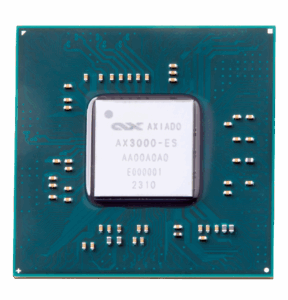 Modern cloud and AI infrastructure faces unprecedented cyber threats, especially at the platform level, where firmware, Baseboard Management Controllers (BMCs), and Root of Trust elements have historically remained vulnerable. These control plane components have become prime targets for sophisticated supply chain, firmware, and insider attacks, exploits that traditional, software-based, or fragmented hardware security solutions cannot preemptively address. The AX3080 Trusted Control/Compute Unit (TCU) by Axiado solves this by embedding AI-powered, silicon-native security directly into the platform itself. It is the world’s first single-chip solution that merges the functionality of a BMC, Trusted Platform Module (TPM), Root of Trust (RoT), cryptographic core, secure networking, flash, DRAM, and an AI inference engine into one unified, compact system-on-chip (SoC). With 4 TOPS of AI performance, four Neural Network Processors, and integrated memory, the AX3080 actively monitors anomalies in real time, identifies zero-day threats, and automatically initiates mitigation without relying on external monitoring systems. This self-contained architecture dramatically reduces attack surfaces, accelerates response time, and simplifies system design. Its adoption in NVIDIA’s Blackwell AI factory platform and deployment by OEMs such as Pegatron and Wiwynn signals strong industry validation. Furthermore, the AX3080 complies with DC-SCM 2.0 and is Post-Quantum
Modern cloud and AI infrastructure faces unprecedented cyber threats, especially at the platform level, where firmware, Baseboard Management Controllers (BMCs), and Root of Trust elements have historically remained vulnerable. These control plane components have become prime targets for sophisticated supply chain, firmware, and insider attacks, exploits that traditional, software-based, or fragmented hardware security solutions cannot preemptively address. The AX3080 Trusted Control/Compute Unit (TCU) by Axiado solves this by embedding AI-powered, silicon-native security directly into the platform itself. It is the world’s first single-chip solution that merges the functionality of a BMC, Trusted Platform Module (TPM), Root of Trust (RoT), cryptographic core, secure networking, flash, DRAM, and an AI inference engine into one unified, compact system-on-chip (SoC). With 4 TOPS of AI performance, four Neural Network Processors, and integrated memory, the AX3080 actively monitors anomalies in real time, identifies zero-day threats, and automatically initiates mitigation without relying on external monitoring systems. This self-contained architecture dramatically reduces attack surfaces, accelerates response time, and simplifies system design. Its adoption in NVIDIA’s Blackwell AI factory platform and deployment by OEMs such as Pegatron and Wiwynn signals strong industry validation. Furthermore, the AX3080 complies with DC-SCM 2.0 and is Post-Quantum Cryptography (PQC)-ready, futureproofing it for the evolving security landscape. By collapsing and securing the entire platform control plane into a single chip, the AX3080 improves embedded computing and redefines secure system architecture for the AI era.
Cryptography (PQC)-ready, futureproofing it for the evolving security landscape. By collapsing and securing the entire platform control plane into a single chip, the AX3080 improves embedded computing and redefines secure system architecture for the AI era.
Silver
Morse Micro
MM8108 Wi-Fi HaLow System-on-Chip (SoC)
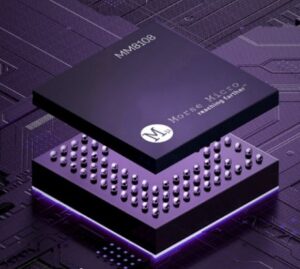 The Internet of Things (IoT) and Industrial IoT (IIoT) continue to demand wireless solutions that are power-efficient, long-range, and easy to deploy. Traditional Wi-Fi falls short in range and battery performance, while proprietary LPWAN alternatives sacrifice speed, IP compatibility, or ease of integration. Morse Micro’s MM8108 Wi-Fi HaLow SoC redefines embedded connectivity by solving these challenges, bringing unmatched scale, performance, and power savings to embedded systems. Based on the IEEE 802.11ah standard, the MM8108 operates in the sub-GHz spectrum, enabling 10x the range, 100x the coverage area, and 1000x the connected devices compared to legacy Wi-Fi, while using significantly less power. It delivers throughputs up to 43.33 Mbps with world-first sub-GHz 256-QAM modulation, ideal for streaming data from remote sensors, security cameras, or monitoring systems. Fully compatible with the Matter standard, the MM8108 ensures seamless interoperability for smart homes, smart cities, and enterprise deployments. It also supports WPA3 security and offers plug-and-play USB connectivity, simplifying integration into existing Wi-Fi networks. Wi-Fi is the world’s most ubiquitous wireless technology, and Wi-Fi HaLow extends its benefits to applications previously out of reach, such as underground mining, expansive agricultural fields, and industrial plants. With its ultra-compact 5×5 mm BGA package, integrated power amplifiers, and low sleep-mode current draw, the MM8108 delivers reliable, scalable wireless connectivity for embedded designs at the edge of the network. Morse Micro’s MM8108 is advancing the IoT/IIoT revolution, bringing long-range, secure, standards-based connectivity where it matters most.
The Internet of Things (IoT) and Industrial IoT (IIoT) continue to demand wireless solutions that are power-efficient, long-range, and easy to deploy. Traditional Wi-Fi falls short in range and battery performance, while proprietary LPWAN alternatives sacrifice speed, IP compatibility, or ease of integration. Morse Micro’s MM8108 Wi-Fi HaLow SoC redefines embedded connectivity by solving these challenges, bringing unmatched scale, performance, and power savings to embedded systems. Based on the IEEE 802.11ah standard, the MM8108 operates in the sub-GHz spectrum, enabling 10x the range, 100x the coverage area, and 1000x the connected devices compared to legacy Wi-Fi, while using significantly less power. It delivers throughputs up to 43.33 Mbps with world-first sub-GHz 256-QAM modulation, ideal for streaming data from remote sensors, security cameras, or monitoring systems. Fully compatible with the Matter standard, the MM8108 ensures seamless interoperability for smart homes, smart cities, and enterprise deployments. It also supports WPA3 security and offers plug-and-play USB connectivity, simplifying integration into existing Wi-Fi networks. Wi-Fi is the world’s most ubiquitous wireless technology, and Wi-Fi HaLow extends its benefits to applications previously out of reach, such as underground mining, expansive agricultural fields, and industrial plants. With its ultra-compact 5×5 mm BGA package, integrated power amplifiers, and low sleep-mode current draw, the MM8108 delivers reliable, scalable wireless connectivity for embedded designs at the edge of the network. Morse Micro’s MM8108 is advancing the IoT/IIoT revolution, bringing long-range, secure, standards-based connectivity where it matters most.
Bronze
Infineon Technologies
PSOC™ Edge
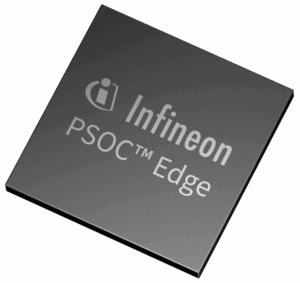 PSOC™ Edge is Infineon’s Machine Learning-enhanced sensing, low power, secured, and advanced HMI high-performance microcontroller family, and enables designers to deliver unmatched, highly usable end-user experiences for next-generation devices. PSOC™ Edge enables a new generation of responsive Machine Learning-based user-centric edge devices by providing hardware-accelerated neural net compute support, delivering both “always-on” low power and high-performance operation in a fully integrated microcontroller with right-sized peripherals, on-chip memories, and state-of-the-art security. In addition to the machine learning hardware acceleration and the comprehensive peripheral set, PSOC™ Edge is supported by a rich set of enablement that developers can leverage for their current and future design needs. With strong ecosystem partners, comprehensive documentation, and the industry-recognized ModusToolbox™ software, integrated with Imagimob’s Studio AI solution, PSOC™ Edge provides the right hardware, software, and tool offerings for a friction-free design experience and an accelerated time to market. The PSOC™ Edge Family of Arm® Cortex®-M microcontrollers features high-performance, low-power, secured MCUs with hardware-assisted machine learning (ML) acceleration for next-generation applications. The PSOC™ Edge devices are based on high-performance Cortex™-M55, including Helium DSP support paired with machine learning hardware accelerators intended to accelerate neural networks in Machine Learning and AI applications. The PSOC™ Edge family supports an extensive set of peripherals, on-chip memories, timers, robust hardware security features, and comprehensive connectivity options. It is built for a variety of consumer and industrial applications where device-based intelligent, intuitive interaction is rapidly evolving, including appliances, speakers, wearables, robotics, and other smart home devices, including connected IoT products.
PSOC™ Edge is Infineon’s Machine Learning-enhanced sensing, low power, secured, and advanced HMI high-performance microcontroller family, and enables designers to deliver unmatched, highly usable end-user experiences for next-generation devices. PSOC™ Edge enables a new generation of responsive Machine Learning-based user-centric edge devices by providing hardware-accelerated neural net compute support, delivering both “always-on” low power and high-performance operation in a fully integrated microcontroller with right-sized peripherals, on-chip memories, and state-of-the-art security. In addition to the machine learning hardware acceleration and the comprehensive peripheral set, PSOC™ Edge is supported by a rich set of enablement that developers can leverage for their current and future design needs. With strong ecosystem partners, comprehensive documentation, and the industry-recognized ModusToolbox™ software, integrated with Imagimob’s Studio AI solution, PSOC™ Edge provides the right hardware, software, and tool offerings for a friction-free design experience and an accelerated time to market. The PSOC™ Edge Family of Arm® Cortex®-M microcontrollers features high-performance, low-power, secured MCUs with hardware-assisted machine learning (ML) acceleration for next-generation applications. The PSOC™ Edge devices are based on high-performance Cortex™-M55, including Helium DSP support paired with machine learning hardware accelerators intended to accelerate neural networks in Machine Learning and AI applications. The PSOC™ Edge family supports an extensive set of peripherals, on-chip memories, timers, robust hardware security features, and comprehensive connectivity options. It is built for a variety of consumer and industrial applications where device-based intelligent, intuitive interaction is rapidly evolving, including appliances, speakers, wearables, robotics, and other smart home devices, including connected IoT products.


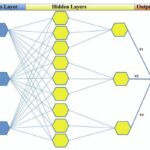
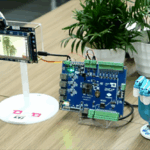

Leave a Reply